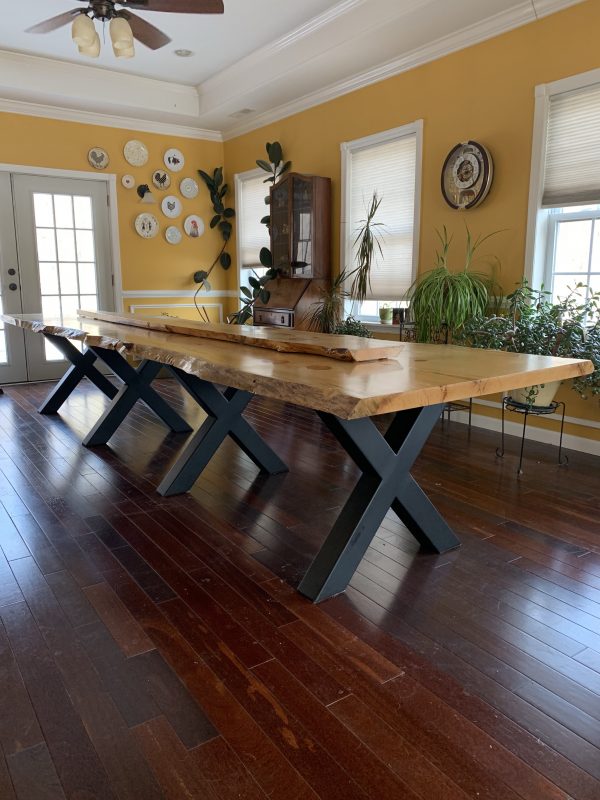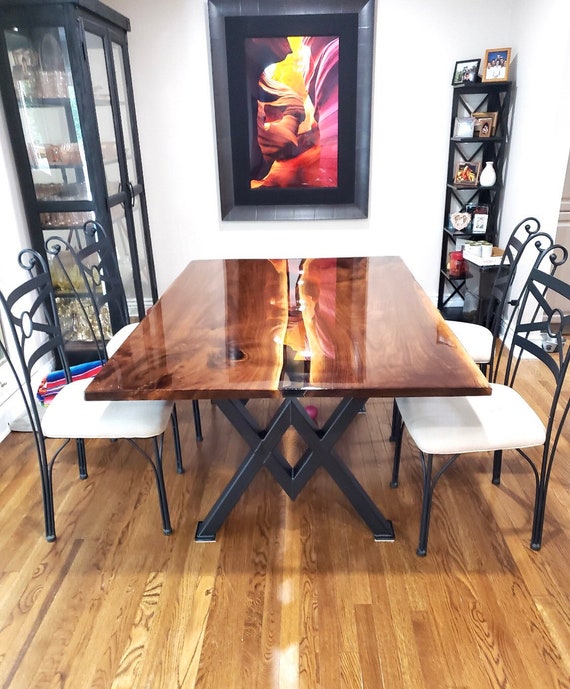The Impact of Dining Room Table Legs on Your Table's Overall Design
From Typical to Modern: Find the Ideal Eating Space Table Legs for Your Design
While timeless designs such as cabriole and transformed legs evoke a sense of ageless refinement, contemporary styles like hairpin and geometric alternatives present an opportunity for striking aesthetic interest. As you take into consideration these elements, the concern remains: just how can you seamlessly incorporate these varied leg styles to develop a harmonious dining experience?
Comprehending Table Leg Styles
The selection of dining-room table leg styles can substantially affect both the looks and performance of the room. Each leg design adds unique practical features and visual elements, dealing with diverse layout choices and use needs. Comprehending these styles is essential for choosing the best eating table that lines up with your overall interior layout vision.
For instance, conical legs use a clean, timeless appearance that can enhance a space's sophistication, while stand bases provide security and make the most of legroom, making them ideal for smaller sized spaces. Hairpin legs, a hallmark of mid-century modern-day style, introduce a commercial flair, allowing for a ventilated, open feeling. Similarly, trestle legs stimulate rustic beauty, supplying robust support and a feeling of timelessness.
Additionally, the choice of materials plays a significant function. Wooden legs can bring warmth and appearance, whereas metal choices commonly share a sleek, modern vibe. Ultimately, recognizing table leg styles is important for producing a cohesive eating area that reflects individual design while making sure practicality and convenience. By thoughtfully thinking about these elements, you can boost both the aesthetic and functional allure of your eating space.
Standard Table Leg Options
When choosing dining-room table legs, traditional alternatives usually embody timeless elegance and workmanship. These designs mirror a rich heritage and a commitment to high quality, making them ideal for those that appreciate traditional visual appeals.
Among one of the most famous standard leg styles is the cabriole leg, defined by its stylish bent form. This design commonly features ornamental makings and is most frequently discovered in Queen Anne and Chippendale furnishings. One more preferred option is the transformed leg, which flaunts a series of smooth, rounded forms that give a traditional appearance while preserving security.
Furthermore, the straight leg, while straightforward, uses a basic and sturdy framework that can blend seamlessly with a variety of tabletop designs. For those drawn to ornate outlining, claw-and-ball feet legs stimulate a sense of magnificence and can serve as a sensational focal factor in any type of eating space.
Finally, stand bases, although not purely legs, offer an alternate typical alternative that enables enough legroom and can be perfectly carved. Each of these standard leg styles adds to the general ambiance of a dining space, marrying function with aesthetic appeal.

Modern Table Leg Styles
Modern table leg layouts use a varied variety of styles that emphasize clean lines and cutting-edge materials. These styles usually focus on capability while serving as striking focal factors within a dining area. Minimalist appearances prevail, with legs crafted from products such as metal, glass, and crafted timber, which contribute to a contemporary and airy feeling.
One preferred layout is the hairpin leg, characterized by its slim, conical framework that supplies stability without overwhelming the table top (dining room table legs). This style is commonly located in mid-century modern furniture and can easily match different eating table forms. Another fad is making use of geometric forms, where legs might handle unbalanced or angular types, including visual rate of interest and a touch of creativity

Blending Designs for One-of-a-kind Rooms
Frequently, property owners look for to produce one-of-a-kind dining areas that show their individual style by mixing numerous layout components. This technique enables the unification of varied looks, resulting in an unified yet distinct setting. For instance, coupling a rustic wood table with sleek, modern-day metal legs can develop a captivating comparison that boosts the room's general allure.
Additionally, incorporating vintage table legs with modern table tops can stimulate a feeling of history while preserving a modern sensibility. Such combinations not only display specific taste yet likewise encourage creative thinking, allowing homeowners to curate a room that feels both individual and welcoming.
Color plays a vital function in this blending procedure; selecting table legs that complement or contrast with the existing color their website scheme can boost visual rate of interest. For instance, whitewashed legs can soften the daring of a dark table surface area, developing a balanced aesthetic.
Tips for Picking the Right Legs
Picking the right table legs is essential for achieving both capability and aesthetic allure in your dining area. Begin by taking into consideration the general design of your space. Conventional setups gain from legs that include intricate makings or transformed styles, while contemporary rooms may ask for sleek, minimal styles.
Following, assess the height and security of the legs. dining room table legs. Common table range in between 28 to 30 inches in elevation, so guarantee the legs match this measurement for comfort. Furthermore, robust products, such as wood or metal, can boost security and long life
Examine the leg shape too-- options include directly, tapered, or pedestal designs. Straight legs offer a classic look, while conical legs can add a touch of sophistication. Pedestal bases offer view it ample legroom and are perfect for smaller spaces.
Final Thought
In summary, picking the ideal dining area table legs requires careful consideration of both standard and modern styles. By harmonizing leg design, height, and material with the total decor, a cohesive and inviting atmosphere can be accomplished.
The selection of eating room table leg styles can dramatically influence both the visual appeals and functionality of the area. Inevitably, understanding table leg styles is necessary for producing a natural dining area that shows personal style while ensuring functionality and comfort.One of the most iconic traditional leg designs is the cabriole leg, identified by its elegant bent shape. Straight legs use a traditional look, while tapered legs can add a touch of sophistication.In summary, picking the excellent eating space table legs calls for mindful consideration of both modern and traditional styles.